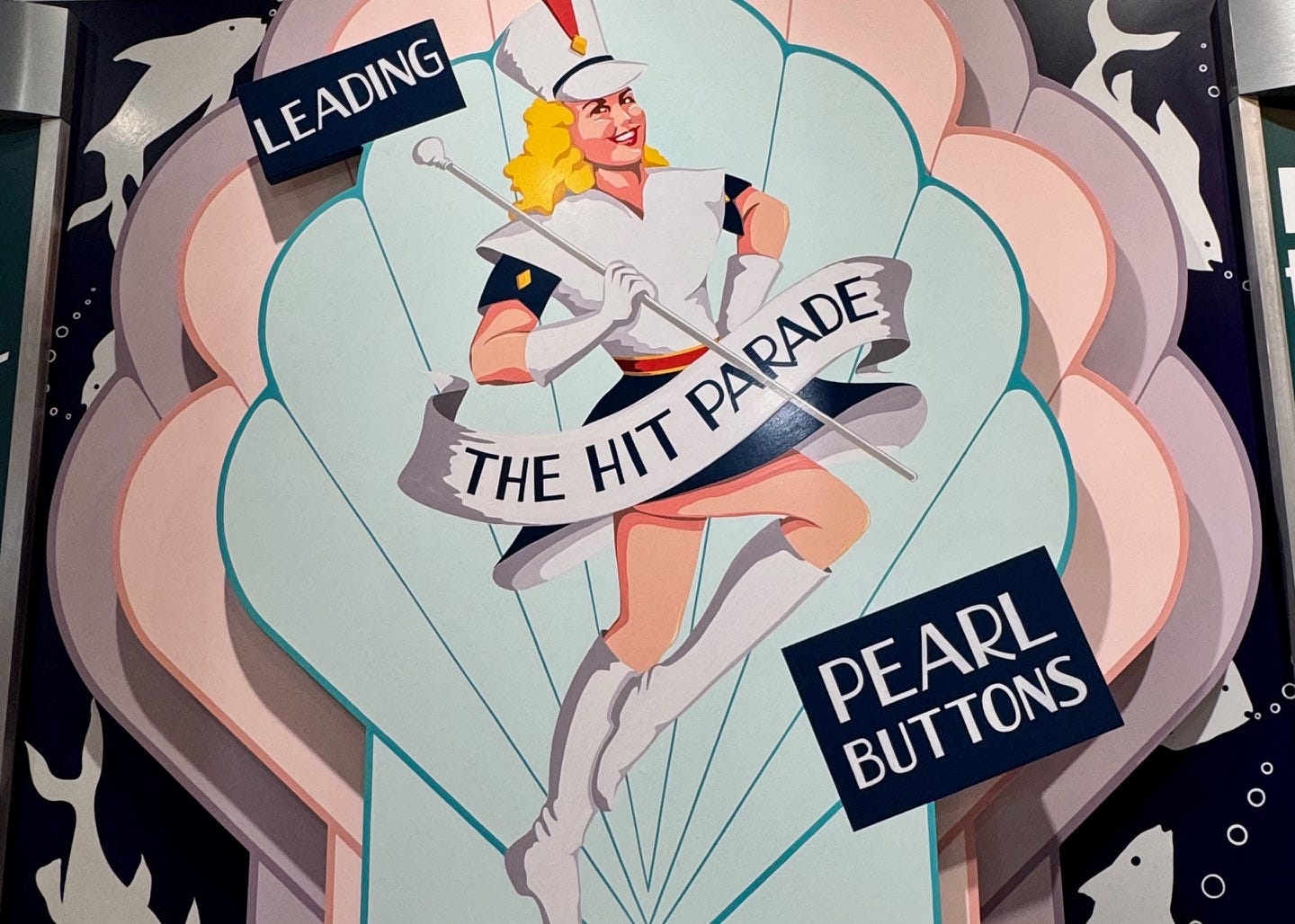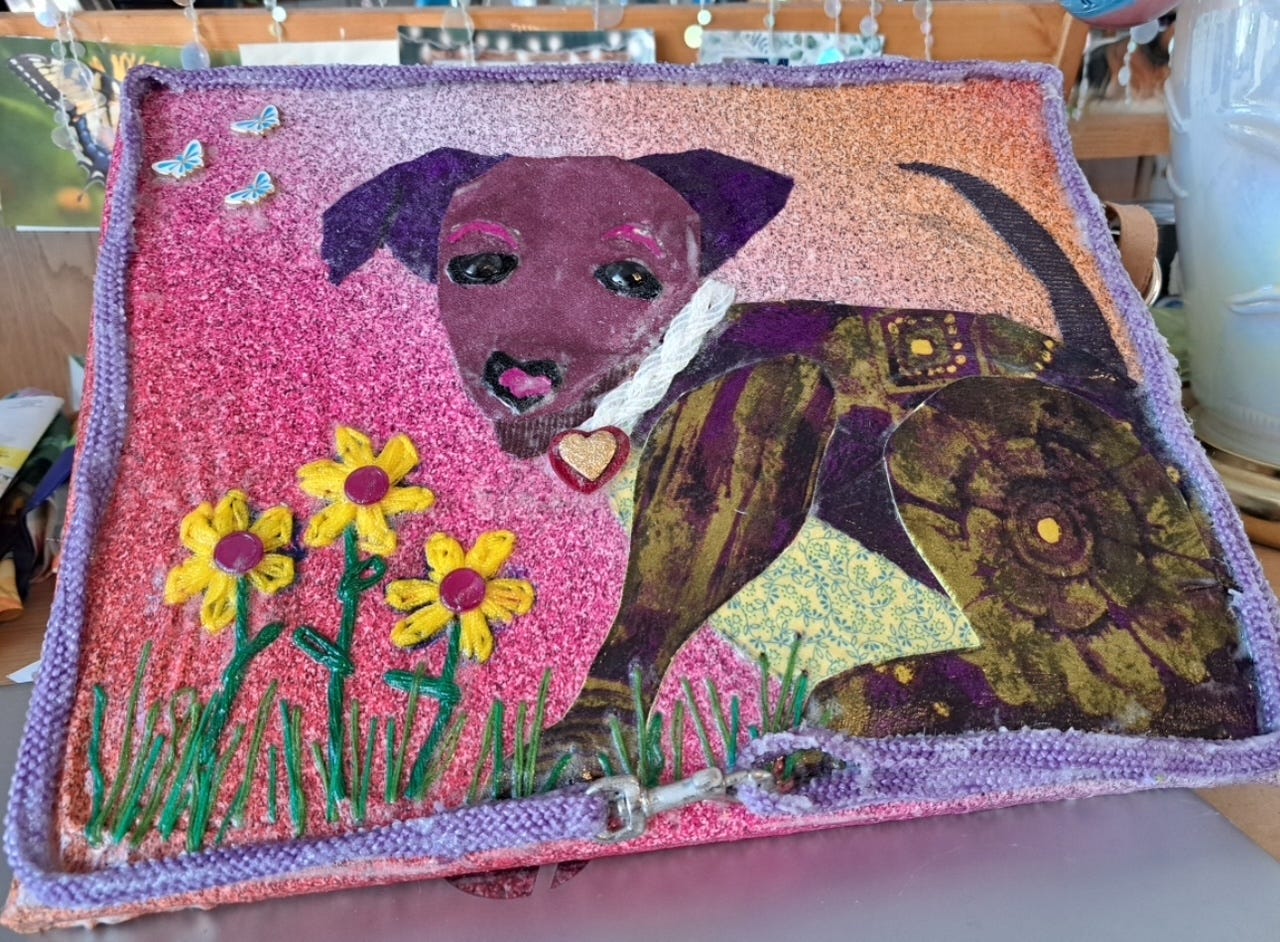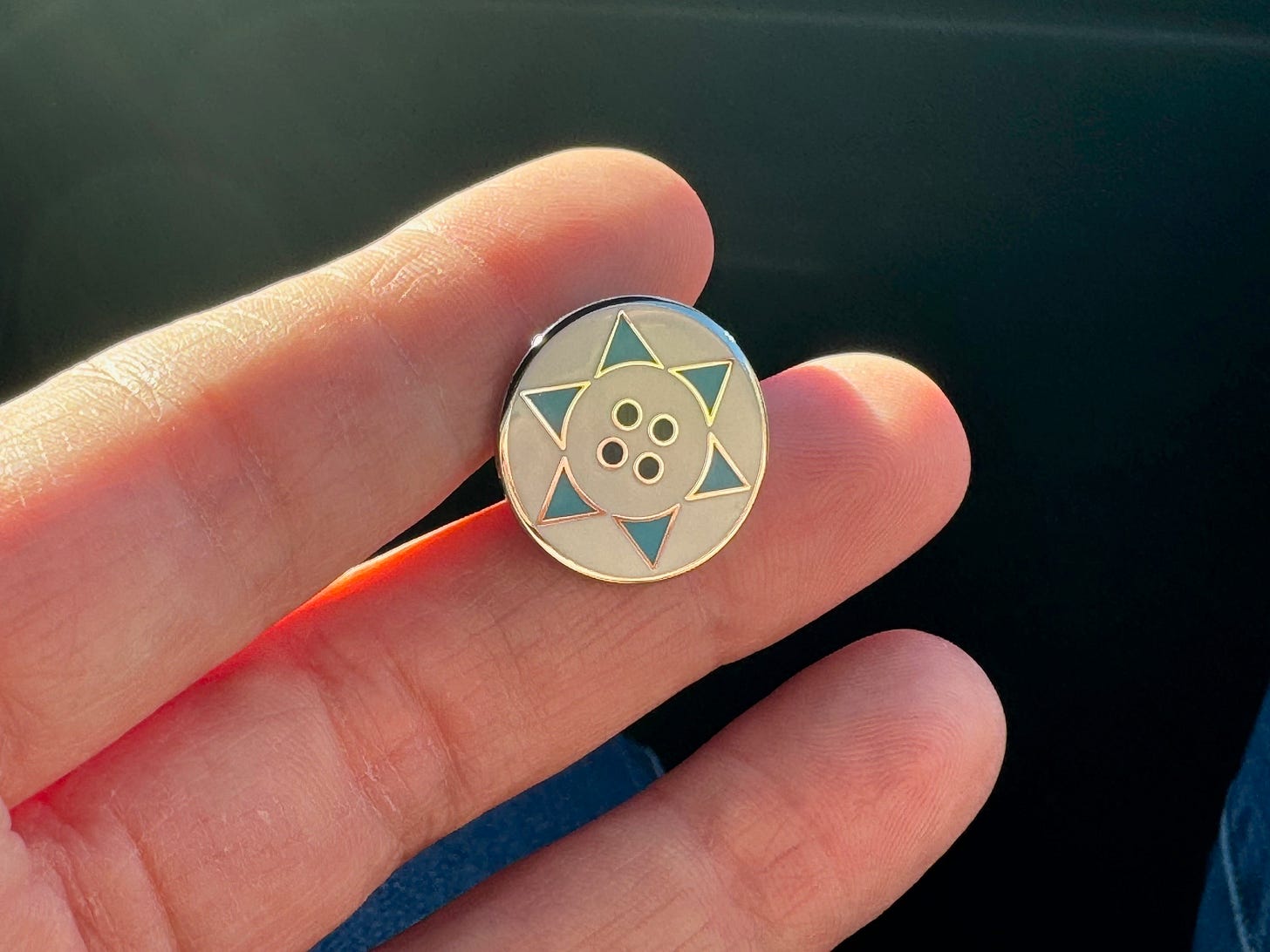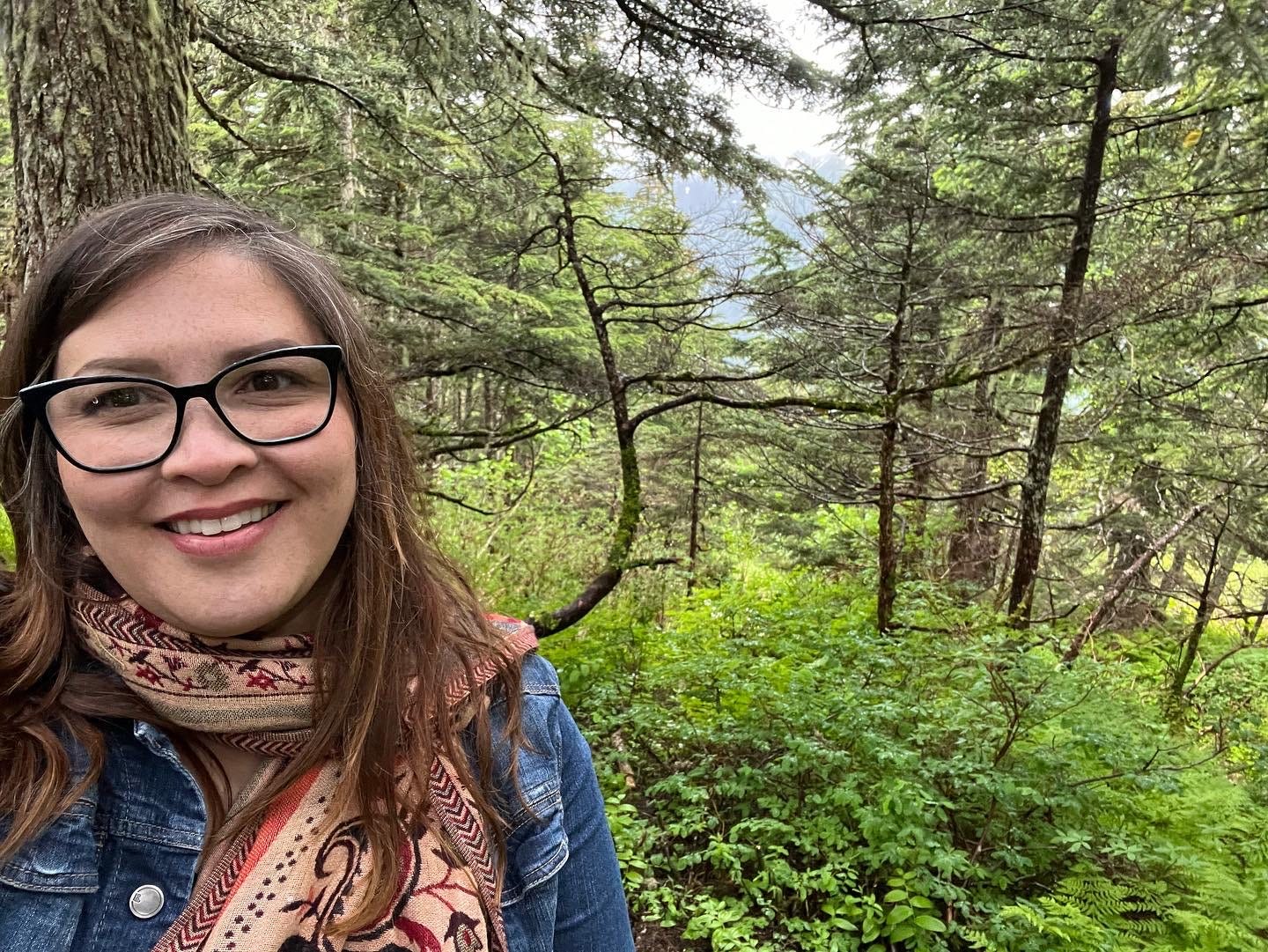I didn’t expect to feel so much in Muscatine, Iowa.
I’d driven there with fellow members of the Creston Historic Preservation Commission for the Preserve Iowa Summit. It’s an event where preservationists, archivists, architects, chamber and main street people get excited about mortar types, cornice lines, community, and place-making. It’s where we gather annually to exchange ideas, resources, best-practices, and a little history.
At the Pearl Button Museum in Muscatine, I learned the story of John Boepple, a German immigrant who arrived in the late 1800s with a shoebox full of buttons and an idea. He saw the Mississippi not just as a river, but as a resource, rich with mussel shells that shimmered with nacre. Boepple adapted European techniques and invented new machinery to punch buttons from the shells. Soon, Muscatine was producing 1.5 billion pearl buttons a year — roughly 40% of the world's supply. It became the Pearl Button Capital of the World.

But like many industries built on extraction, that boom had a bust. The mussels were overharvested. The water suffered. And the factories fell silent eventually shifted to plastics.






As Muscatine moves towards modernizing its historic waterfront, its history isn’t forgotten. At the Stanley Center for Security and Peace — an award-winning “living building” just blocks away — they’ve embedded the city’s history into its walls. In their kitchen, the backsplash is made from pearl button blanks, repurposed in a way that’s sustainable, economical, and deeply symbolic. It’s preservation as design, history as utility. It’s a reminder that even discarded things still have value.



In Creston
Bunn-O-Matic is one of Creston’s largest employers, and the backsplash made me think what a backsplash of coffee beans would look (or smell) like. But more than beans, I thought about buttons a lot after that visit. I’ve always had a soft spot for them.
When I bought Quilt & Other Notions from Joyce Franklin in 2016, the one request I heard over and over was, “Do you have any buttons?”
Having a full button display, however, was cost-prohibitive. And even with hundreds of options, I’d inevitably be missing the one someone needed. So, I began collecting. And I got good at it.
I found buttons in estate sale tins and yard sale mason jars. I found them on the floors of restaurants, and random drawers of places I visit and volunteer. I raided the insides of jackets and dress shirts - my husband’s, my kids’, sometimes even friends’ — hunting for the spares tacked near the tags. When you start looking for something, you begin to see it everywhere. I found them randomly here and there. Often in plain sight.
Our Story
What I love most about buttons are that each one tells a story of a lost coat, a growth-spurt, a favorite garment worn to death, a grandmother’s sewing kit left untouched after she passed. To me, preservation isn’t always about grandeur like preserving a historic building. These minor bits can be equally storied or important.

Last fall, I befriended a woman who attended a collage workshop I offered at Creston Arts Center. Brian, our board president, had first met her at the local fitness center. He noticed her creativity, need for community, and invited her to show up.

She told me about her dog, who wasn’t doing well. I helped her turn a photo of him into a pattern for a fabric collage with material donated by Amy Higgins, the daughter of my former fabric rep, from my quilt shop days.
The dog collage was an ambitious project, but she took it home determined to finish. The next day, she texted to inform me her dog passed. Art continued to guide her through grief.
Since then, she’s driven over 30 miles each way to attend more workshops, occasionally in dangerous weather, and even when her body didn’t want to cooperate. One day, I arrived at the art center to find dozens of large jars filled with buttons. They were all meticulously sorted by color, material, and shine. Wood. Metal. Matte. Mother of pearl. I used a dolly to move them.
I was curious about her collection, so I did what I always do, I asked her about it. That’s when I learned she’s dying. Terminal. The buttons, like her art, are her way of leaving something behind to others who will enjoy it as much, if no more.
She texted me recently to tell me that she’s been moved to a care center in Creston. With so many commitments lately, Brian went right away. She wasn’t asking for anything, but we understood the assignment. We made sure she has art supplies and talked about expanding art offerings into the centers.
She’s also been writing her life story, which is near completion. She’s even given me permission to read it. I honestly don’t know anything about her other than she loves art, is really kind, a little bit lonely, and greatly misses her pup.
And maybe that’s what this is really about. Maybe that’s why she brought us the buttons: to share her story, to keep making art with us, just long enough to teach us what matters.
Piece of the Past
Buttons tell us how people lived, what they wore, and what mattered. They tell us about the past in a way that give us something to hold onto when the future feels hopeless. For some of us, they’re tiny, sentimental tokens of connection with someone we loved, that we keep in our pocket or sewing table.
In Peoria, Illinois, each of the six million buttons in the Holocaust Memorial represents a life lost to hatred. There are five million more in adjacent triangles to represent others, too. Queer people, Roma, disabled people, political dissidents. Eleven million buttons total. Each one representing a life cut short.


As Holocaust survivors become fewer and systems grow stronger, our responsibility grows, too. As a mother, I’m dedicated to teaching my children to name atrocities, stand against injustice, and reject every narrative that tells us to fear difference or devalue anyone’s worth.
Preservation isn’t just about buildings or buttons. It’s about people. It’s about holding on to the past. Not to live in it, but to build something better from it.
About Sarah and All Things IWC







Loved the commentary and your delightful story-telling. I have often wondered “ what to do ?” with your grandmas buttons I still keep in her drawers of the old Singer Sewing Machine. Now I know! They will wait patiently until you return for your next visit …
I met you last week at the Summit in Muscatine. This is a great story, I'll share it with my historic preservation colleagues. Keep writing, you're talented.